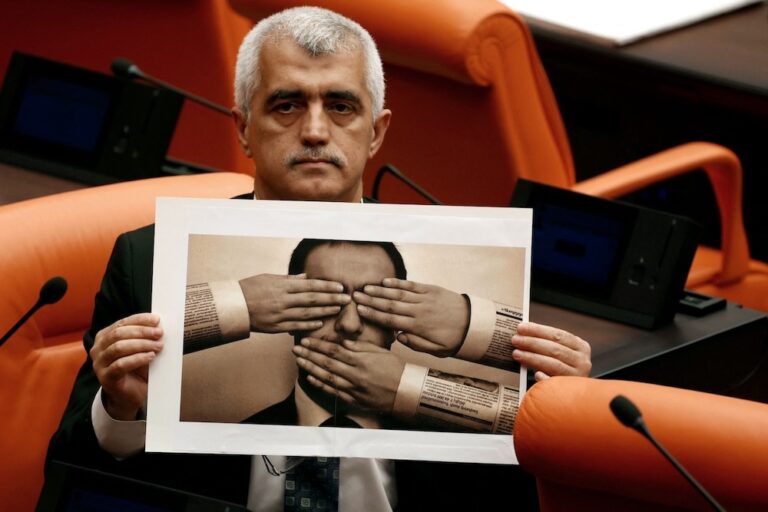(BIANET/IFEX) – Various journalists have become the target of aggressive insinuations and direct threats, including a death threat, due to their coverage of a controversial song and video clip considered to portray the murderers of journalist Hrant Dink as heroes. Nationalist singer Ismail Türüt recorded a song entitled “Plan, don’t make a plan”, composed by […]
(BIANET/IFEX) – Various journalists have become the target of aggressive insinuations and direct threats, including a death threat, due to their coverage of a controversial song and video clip considered to portray the murderers of journalist Hrant Dink as heroes.
Nationalist singer Ismail Türüt recorded a song entitled “Plan, don’t make a plan”, composed by Arif Sirin. The song, which praises the patriotism and nationalism of the Black Sea people, is generally interpreted to praise the murder of Hrant Dink.
The song has become notorious because it was used as background music in an amateur video clip published on the popular website YouTube. The clip, which has now been removed from the website, contained images of Hrant Dink, his dead body and the suspects in his murder. A week after the discovery of the YouTube clip, its creator, university student Hakan Öztekin, said that he had prepared the clip without any political aim.
BIANET, however, sees the song, as well as the clip, as an example of a nationalist hate discourse that is encouraging extreme groups to perpetrate lynching acts, such as the murder of Hrant Dink. Although they do not explicitly state that Dink’s murderers should not be punished, BIANET believes that the song and video clip portray the murderers as heroes. Freedom of expression does not allow for such hatred-inciting discourse. Human rights activists have reacted against both the song and the clip.
Following a report from the Istanbul Police Department, the Istanbul Chief Public Prosecutor’s Office has started an investigation into Türüt and Sirin. The two appeared in the Sultanahmet Law Court on 19 September 2007 to give their statements. They were accompanied by some 20 private body guards, whom Türüt called his “friends”.
Türüt and Sirin’s lawyer Ömer Yesilyurt made a public statement in front of the court, in which he threatened journalists and writers: “I call on all columnists who are burying their heads in the sand when people say ‘Armenians were murdered’. We will continue to say what we know. Everyone should know their limits.”
A similarly threatening attitude was displayed towards “Yeni Safak” journalist Ali Bayramoglu, the first journalist to draw attention to the existence of the clip on YouTube, on 15 September.
On a FOX TV programme of 20 September, Türüt and Sirin continued their aggressive rhetorical campaign. Sirin said: “I find Ali Bayramoglu’s attitude strange. What is such a writer doing in such a political climate as Turkey’s? The press community must watch such a writer.” The implication can be read either as a call for self-censorship, or as a warning that if certain journalists do not show restraint, others would have to impose discipline upon them.
Bayramoglu has interpreted the comments as a threat and has been given police protection. In his column of 18 September, Bayramoglu criticised Türüt and Sirin strongly, saying, for instance: “What is this country coming to? One kills, one writes a poem about it, another sings a song about it.”
Bayramoglu also wrote an article on the importance of solving Dink’s murder, published on 4 July 2007 and entitled, “Our Life is in Danger”. After its publication, Bayramoglu received a death threat by email, which read, “If you continue to write like that, you will end up like Hrant Dink”. The author of the threat has not been identified. A complaint has been filed with the Eyüp Public Prosecution in Istanbul.


